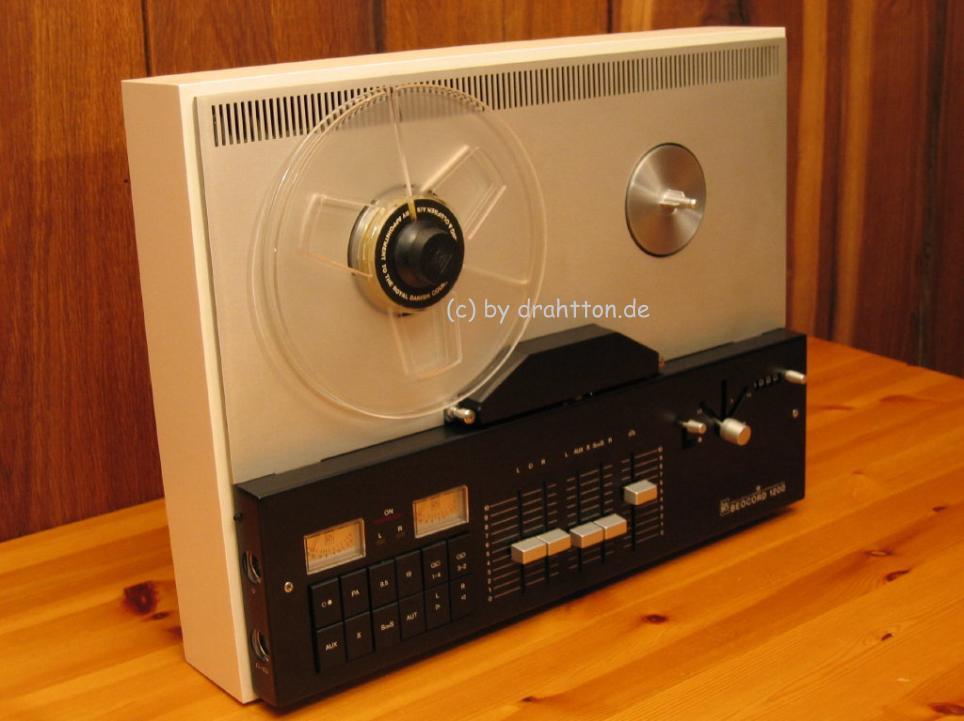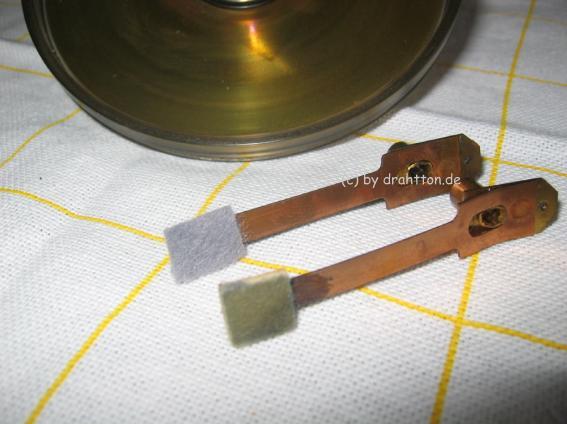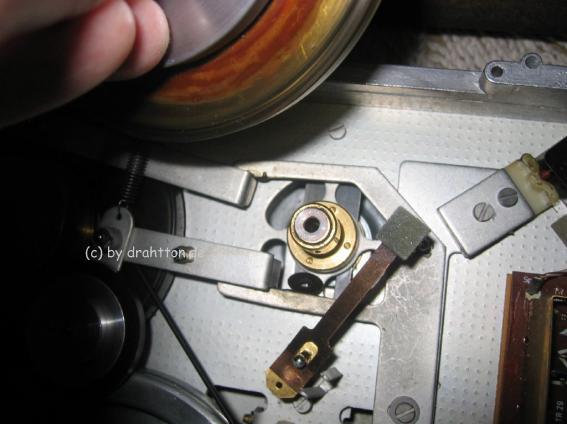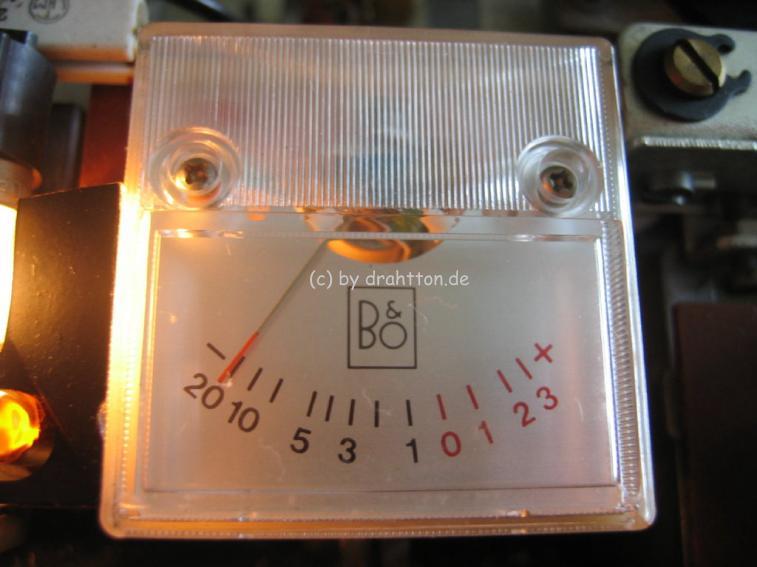
K5_10-1
www.drahtton.de
|
<- BEOCORD 2400 |
Übersicht |
-> BEOCORD 1600 |
BEOCORD 1200
1969-1972
1969 wurden die Beocord 1200, Beocord 1600 und Beocord 2400 eingeführt:

K5_10-1
1969 - 1972
Beocord 1200
Beocord 1200 Type 4207 was a
reel-to-reel tape recorder. Among its features it had sound-on-sound,
automatic recording level control
and mixing. The in-built PA amplifier could be operated without the motor
running.
Beosystem 1200 - made up of Beomaster 1200, Beocord 1200 and Beogram 1200 was
Bang & Olufsen's B&O’s first designed system.
The design 'kinship', which emphasised the interdependence between B&O’s
various products, became a characteristic of B&O for
many years. Beosystem 1200 was one of the first products selected by New York's
Museum of Modern Art for the museum’s permanent
collection (not exhibition) in 1972.
Beocord 1200 was designed by Jacob Jensen In 1969 the Danish Society of
Industrial Design awarded Bang & Olufsen and Jacob Jensen
the ID prize for the Beomaster 1200 radio/amplifier, Beogram 1200 turntable and
Beocord 1200 cassette recorder for unusually beautiful
and user friendly design. The jury emphasised in particular the Beomaster 1200
receiver which pointed in a new direction for the design of radios.
The 1200 series represented the logical continuation of the line of
development and design which put B&O at the forefront of
manufacturers of entertainment electronics.
Beocord 1200 Specifications:
Type: 4207:
Tape speeds 19 and 9.5
cm/sec. (7 1/2 and 3 3/4 in/sec.)
Number of tracks 4 tracks record and
playback
Real size Max. 18 cm
Playing times Tape Speed 19 cm/sec:
360M 2 x 30 min
540M 2 x 45 min
720M 2 x 60 min
1080M 2 x 90 min
Tape Speed 9.5 cm/sec:
360M 2 x 60 min
540M 2 x 90 min
720M 2 x 120 min
1080M 2 x 180 min
For mono, multiply above playing times by 4
Fast forward and rewind Approx. 200 sec for LP tape
Counter Pushbutton reset, 4 digit readout
Wow and flutter 19 cm/sec +/- 0.15% (DN 45507)
Speed deviation Less than 1 %
Tape stop Photo-electric stop at end of tape
Amplifier:
Frequency response 19
cm/sec: 30 - 20,000 Hz (DIN 45500)
Equalization 19 cm/sec: 50 µsec, 3180 µsec
Distortion Less than 5% over tape at VU 0 Less than 1% in amplifier
Signal-to-noise ratio 65 dB (DIN 45500, 4 - 2.5)
Cross-talk select Mono: Better than 60 dB at 1000 Hz
Stereo: Better than 40 dB at 1000 Hz
Erasure Better than 70 dB
Erase frequency 100 kHz
Dimensions W x H x D: 44 x 14.7 x 33 cm
Weight: 11 kg
Voltage: 110 - 130 - 220 - 240 volts AC
Power consumption: 20 - 52 W
Connections: Inputs
Microphone:
Radio DIN
Radio US standard
AUX DIN
AUX US
Outputs Headphones:
Radio DIN
Radio US

K5_10-2

K5_10-3
Auch
das ist fast typisch für B&O: Eine Reibscheiben-Halterung aus Acrylglas
oder einem ähnlichen
durchsichtigem Kunststoff, verbaut an einer Stelle, die man niemals sieht! Auch
andere Bauteile im Inneren
dieser Beocord 1200 / 1600 sind aus diesem Werkstoff. Das Problem: Dieser
Kunststoff versprödet mit der
Zeit und bricht dann häufig. Einige Bauteile sind dann unterdimensioniert, -ein
Tribut für das schlanke Design!
Der Defekt, den das Foto zeigt, ist der Klebstoff, der keiner mehr ist! Viele
Geräte funktionieren dennoch
oft mehr schlecht als recht und finden dann hoffentlich einen Platz in einer
Sammler-Vitrine. Überholt,
richtig eingemessen ein Fest für Augen und Ohren! Für einen langen harten
Dauerbetrieb wie die Vorgängermodelle
die praktisch „unkaputtbar“ waren, waren sie weniger geeignet:

K5_10-4

K5_10-5

K5_10-6

Vorsprung
durch Design: Die „Leuchtdioden“ die noch nicht verbreitet waren, sind einfache
Glühlämpchen!

K5_10-8
BEOCORD 1200/1600 Parade: